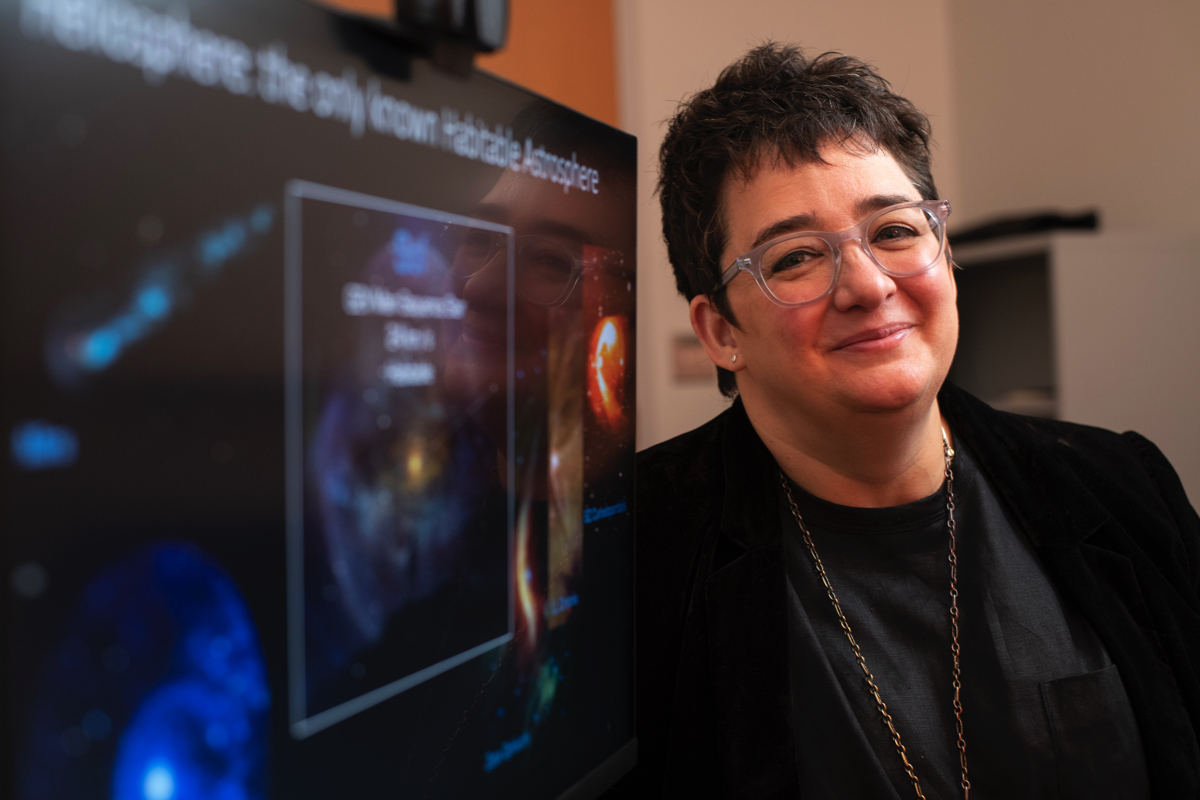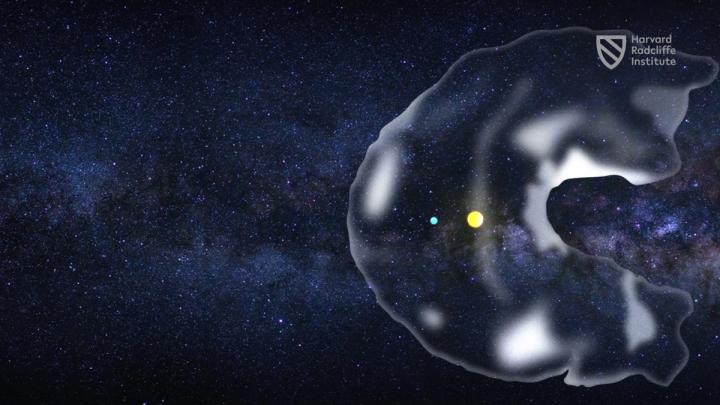Could a massive cloud of cold, interstellar gas have pushed the sun’s protective heliosphere away from Earth two to three million years ago, causing an ice age? Former Radcliffe Fellow Merav Opher thinks it’s possible.
Opher, an astrophysicist at Boston University, released a paper with Harvard physicist Avi Loeb and Johns Hopkins astronomer Joshua Peek this morning, positing that Earth was once left exposed to cosmic dust and radiation after the cocoon of solar wind enclosing the solar system was deformed. When a “cold cloud” of matter moving between star systems millions of years ago overtook that cocoon, it compressed the heliosphere’s usual shape—a bit like a deflated croissant—down into the shape of a bullet, pushing it beyond Earth’s orbit.

The researchers’ findings could help us better understand key events in Earth’s history, from ice ages to the emergence of the human species—both of which overlap with the planet’s exposure to the “cold cloud.” It’s a reminder of how critical stars—with their light, heat, and now, protective winds—are for life, and how sudden phenomena from space, like asteroids, supernovae, and interstellar clouds, may have altered the course of the planet’s development.
Astronomers know for certain the arrival of the cold cloud caused important changes in our atmosphere’s chemistry and subjected it to more radiation. In fact, geologists recently used small marine fossils to prove an increase in radioactive materials on earth two to three million years ago. The change may have impacted Earth’s ozone layer, encouraged biodiversity—because the increased radiation could have accelerated mutation rates—and shifted its climate, by cooling temperatures and causing ice clouds to form.
Thankfully, the sun and the cold cloud continued moving through the universe in different directions and eventually separated, allowing the heliosphere to snap back into place. That left Earth and its inhabitants safely under the sun’s protection again.
Opher, who will be returning as a Radcliffe Fellow for the summer, has long been looking into the heliosphere through a center she runs at NASA, aptly called the SHIELD (Solar Wind with Hydrogen Ion Charge Exchange and Large-Scale Dynamics) DRIVE Science Center. “I made a name,” she said of her career, “on the heliosphere.”
Before starting the study, though, Opher had wondered how she could justify her work to people outside her field. Applying to the Radcliffe program, which brings together academics from across a host of disciplines, only added to that impulse.
“If I meet an artist, if I meet a writer, why do I justify why this is important?” Opher thought.
The “heliosphere is our protective bubble, our home in the galaxy,” she realized, meaning it could have seriously affected Earth’s development. As she dug further, joining forces with Loeb and Peek, they found, indeed, that Earth had lost that bubble for a recent window in its history—and may well have at other points during its four-billion year existence. What precisely that meant for its development, though, will be left for others to explore.
For Opher, the results, which will be of interest to experts in a range of fields, are a testament to the importance of interdisciplinary work. “I really, really hope it's going to inspire people to have more interdisciplinary conversation,” Opher said. “The richness of encounter of different disciplines is critical.”
Her work itself brought together astronomers working on very different scales—Opher at the level of the solar system, and Loeb at the cosmic level of the universe—who tend to work separately. Loeb compared their collaboration to bringing together foreign and domestic policymakers: “It’s two disciplines, one dealing with international methods and the other one with what happens inside the country,” he said. But sometimes, the international affairs of the universe affect life at home near the sun—as occurred when a cold, interstellar medium arrived in our solar neighborhood millions of years ago.
Like much in astronomy, the sheer scale of this research puts earthly affairs in perspective, too. “It raises the whole issue of us, instead of engaging in conflicts on this Earth, and wasting $4 trillion every year on military budgets, you know, thinking more positively and cooperating internationally,” Loeb said, reflecting on his own takeaways from his research.
While pointing out his hope for “a more prosperous future for humanity,” he added, we’ll still be left facing “all the risks that come from space.”







